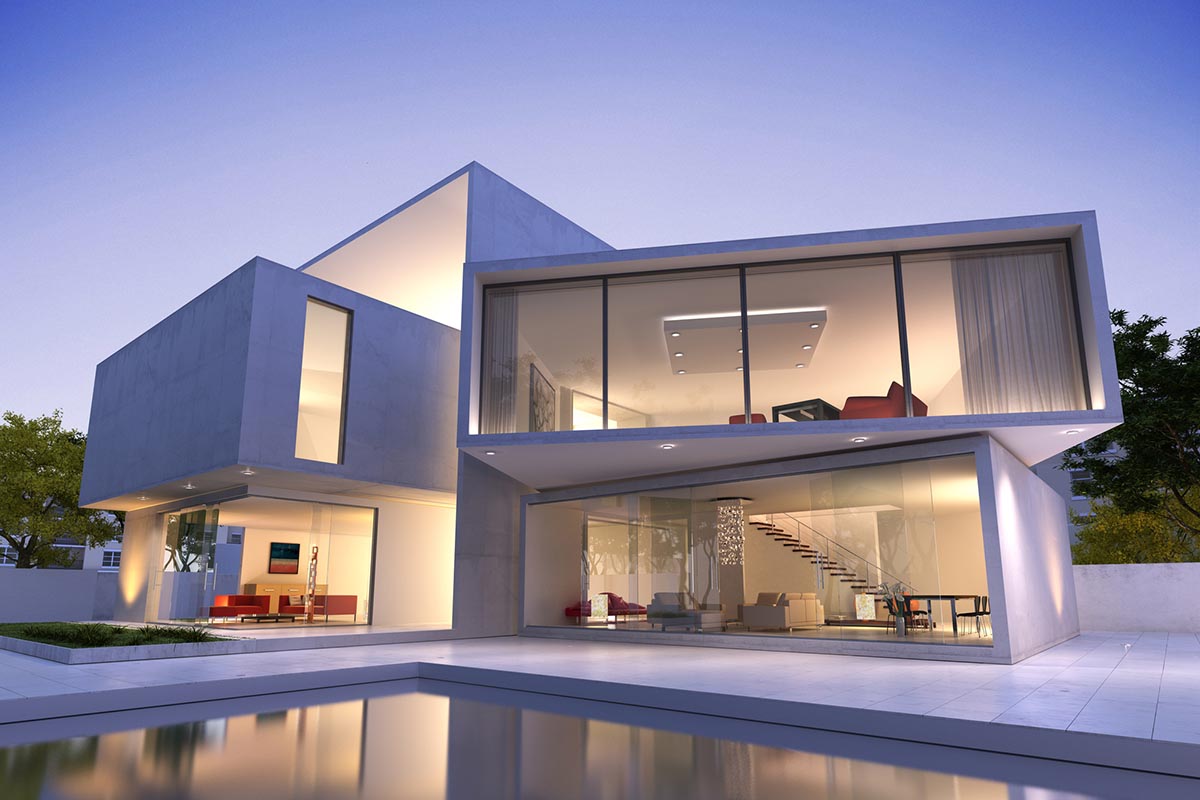A Guide to Different Types of House Styles
Are you intrigued by the captivating world of architecture and the many existing house styles?
From the enchanting elegance of Victorian homes to the sleek and modern lines of contemporary architecture, we will explore various types, each with unique characteristics and historical background.
When choosing a house, there are various styles to consider. Each house style has unique characteristics and architectural elements that define its overall design.
In this article, we will take a comprehensive journey through various types of house styles, exploring their key features, historical context, and architectural elements.
Whether you’re a homeowner looking for inspiration, an aspiring architect with a passion for design, or simply an enthusiast eager to expand your knowledge, this comprehensive guide will give you a deeper understanding of the architectural tapestry that shapes our built environment.
For those specifically interested in the work of Architects Solihull, this guide will also provide insights into the unique design philosophies and projects that make Solihull’s architecture stand out.
Various types of house styles
Exploring different house styles is a fascinating realm of architectural design, offering many options to suit different tastes and preferences.
These house styles offer diverse options, each with unique charm and architectural elements.
Whether you prefer the warmth and simplicity of the Craftsman style or the luxury of the Victorian style, there’s a house style to suit every taste.
Let us explore these incredible styles and envision yourself in the home of your dreams. Discover the architectural wonders crafted by renowned architects like Frank Lloyd Wright, Gustave Eiffel, and Zaha Hadid, who left an indelible mark on the design world.
Remember, your home is not just a place to live but a reflection of your personality and style. You can find inspiration and create a space like yours by exploring different house styles.
Victorian Style Homes: A Grandiose Era of Elegance and Ornamentation
Victorian-style homes, born during the reign of Queen Victoria from 1837 to 1901, are architectural marvels that exude luxury and romanticism. With their intricate details, vibrant colors, and asymmetrical designs, these homes capture the essence of a bygone era.
Let’s delve into the captivating world of Victorian architecture and discover what makes it truly remarkable and one of a kind of different types of house styles.
Key Features and Characteristics:
- Ornate Ornamentation: Victorian homes are known for their lavish ornamentation inside and out. The elaborate woodwork, decorative moldings, and intricate fretwork adorn the facades, creating a visual feast for the eyes.
- Rich Color Palette: Vibrant colors play a significant role in Victorian style. These homes often boast bold and contrasting color schemes, with hues like deep reds, vibrant blues, and golden yellows accentuating the architectural details.
- Asymmetrical Designs: Victorian homes embrace asymmetry, with different sections and projections that create a visually captivating and dynamic exterior. Towers, turrets, and bay windows add depth and character to the overall structure.
- Eclectic Influences: Victorian architecture drew inspiration from various design movements, including Gothic Revival, Italianate, and Queen Anne styles. This fusion of influences resulted in a unique and eclectic aesthetic.
Notable Examples:
- The Painted Ladies, San Francisco: These colorful Victorian houses lining the streets of Alamo Square are iconic landmarks. Adorned with intricate detailing, they showcase the quintessential charm of Victorian architecture.
- Buckingham Palace, London: While primarily a symbol of the British monarchy, Buckingham Palace also exhibits Victorian architecture. Its grand façade, with its symmetrical design and elaborate embellishments, is a testament to the luxury of the era.
- The Breakers, Newport: This magnificent mansion in Rhode Island showcases the luxuriousness of Victorian architecture. With its expansive size, ornate interiors, and stunning ocean views, it is a prime example of Gilded Age opulence.
Victorian-style homes continue to captivate admirers with their timeless beauty and intricate craftsmanship. From the ornate mansions of Newport to the charming Painted Ladies of San Francisco, these architectural treasures transport us to a glorious era of elegance and refinement.
So, if you’re drawn to the allure of intricate details, vibrant colors, and a touch of romanticism, consider embracing the Victorian style. Create a home that echoes the luxury of the past while embracing your unique vision.
Craftsman Style Homes: Embracing Nature and Timeless Craftsmanship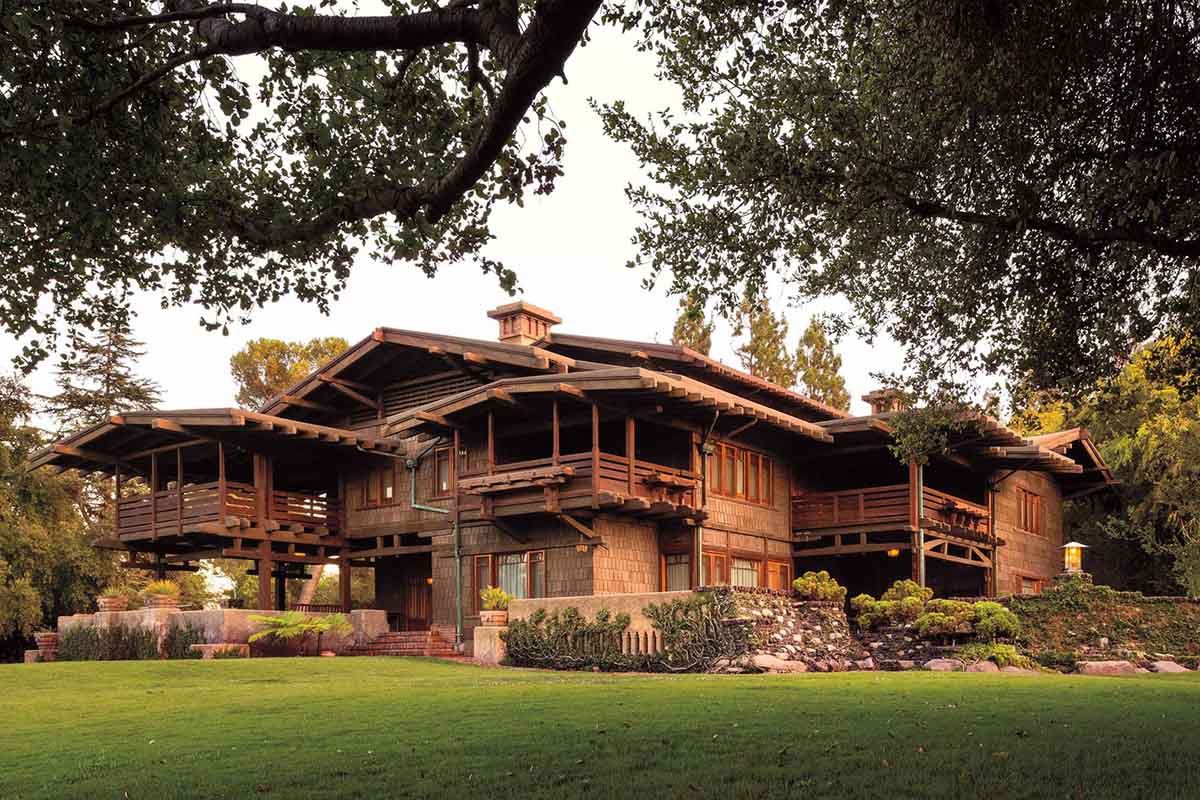
Craftsman-style homes, a true testament to the spirit of artisanal craftsmanship and a celebration of the beauty found in nature, emerged as a heartfelt response to the industrialized architecture of the late 19th century.
With their warm and inviting aesthetics, these homes establish a harmonious relationship between the built environment and the natural world. Let’s embark on an exhilarating journey into the captivating world of Craftsman style and explore the extraordinary features that make it truly exceptional.
Key Features and Characteristics:
- Natural Materials: Craftsman homes use raw materials, such as wood, stone, and brick. These elements bring warmth and authenticity to the design, creating a connection to the surrounding environment.
- Handcrafted Details: Impeccable craftsmanship is a hallmark of the Craftsman style. From intricately carved woodwork to meticulously crafted built-in furniture, these homes showcase the artistry and attention to detail of skilled artisans.
- Low-Pitched Roofs: Craftsman homes typically feature low-pitched roofs with broad eaves. This design element adds visual appeal and protects from the elements while maintaining a cozy and inviting atmosphere.
- Inviting Front Porches: Craftsman style emphasizes the importance of outdoor living. Welcoming front porches encourage community interaction and provide a space to relax and enjoy the natural surroundings.
Notable Examples:
- Gamble House, Pasadena: Designed by brothers Charles and Henry Greene, the Gamble House is a stunning example of Craftsman architecture. Its meticulous woodwork, intricate joinery, and seamless integration with the landscape make it a true masterpiece.
- Fallingwater, Pennsylvania: Designed by the renowned architect Frank Lloyd Wright, Fallingwater exemplifies the principles of organic architecture. Its cantilevered balconies, stone walls, and cascading waterfall blend the home with its natural surroundings.
- Greene and Greene Houses: Brothers Charles and Henry Greene were pioneers of the Craftsman style, and their designs continue to inspire. The Blacker House and the Robert R. Blacker House showcase their exceptional attention to detail and dedication to creating harmonious living spaces.
Craftsman-style homes owe their enduring appeal to the visionary architects and designers who championed this distinctive architectural style. Legendary figures such as Frank Lloyd Wright and the Greene brothers, Charles and Henry, left an indelible mark on the Craftsman movement.
Their groundbreaking designs seamlessly blended function with form, creating homes that harmoniously coexist with their natural environments and evoke a sense of timeless beauty.
Colonial Revival Style: Timeless Elegance Inspired by the Past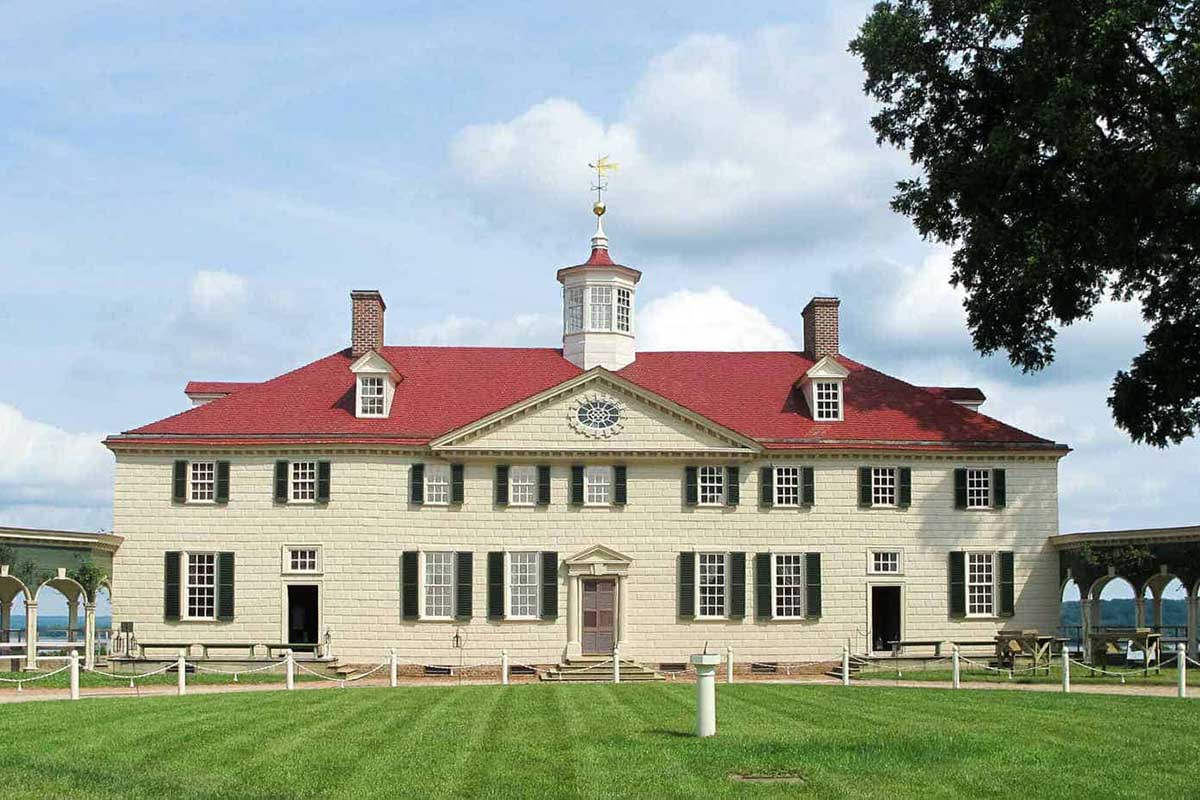
Colonial Revival style homes pay homage to the architectural traditions of the colonial period, particularly in North America. These homes capture the essence of a bygone era, blending historic charm with modern comfort. With their symmetrical facades, decorative accents, and spacious interiors, Colonial Revival-style homes offer a sense of timeless elegance.
If this is a style that you’re just head over heels in love with (and who’s to blame you), then it’s still possible to get this timeless yet elegant type of home.
You just need to be sure that you know a good stone manufacturer and a home-building company, and it can definitely happen!
Let’s delve into the captivating world of Colonial Revival architecture and discover what makes it so unique.
Key Features and Characteristics:
- Symmetrical Facades: Different types of house styles, like the Colonial Revival homes, feature balanced and symmetrical designs. The façade typically has a central entrance with evenly spaced windows on either side, creating a sense of order and balance.
- Decorative Accents: These homes often boast decorative accents, such as columns, pilasters, and pediments. These architectural elements draw inspiration from classical Greek and Roman design, adding a touch of grandeur to the overall appearance.
- Spacious Interiors: Colonial Revival style prioritizes spacious interiors, with open floor plans and ample room for living and entertaining. High ceilings and large windows contribute to a light and airy atmosphere.
- Traditional Materials: Materials like brick, stone, and wood are commonly used in Colonial Revival homes. These materials provide a sense of authenticity and durability, adding to the overall charm and character.
Notable Examples:
- Mount Vernon, Virginia: As the iconic home of George Washington, Mount Vernon showcases Colonial Revival architecture at its finest. The estate’s neoclassical design and symmetrical façade make it a true testament to the style’s grandeur.
- The Biltmore Estate, North Carolina: Built by George Vanderbilt in the late 19th century, is a magnificent example of blending Colonial Revival and Châteauesque styles. Its grandeur, intricate details, and expansive grounds make it a remarkable architectural gem.
- The White House, Washington, D.C.: The White House, the official residence of the President of the United States, draws inspiration from the Colonial Revival style. Its neoclassical design, with its symmetrical façade and prominent columns, pays homage to the architectural traditions of the country.
Colonial Revival style homes continue to captivate homeowners with their timeless elegance and historical charm. Whether it’s the symmetrical façade, decorative accents, or the allure of spacious interiors, these homes evoke a sense of grandeur and sophistication.
Mid-Century Modern Style: Timeless Design for the Modern Enthusiast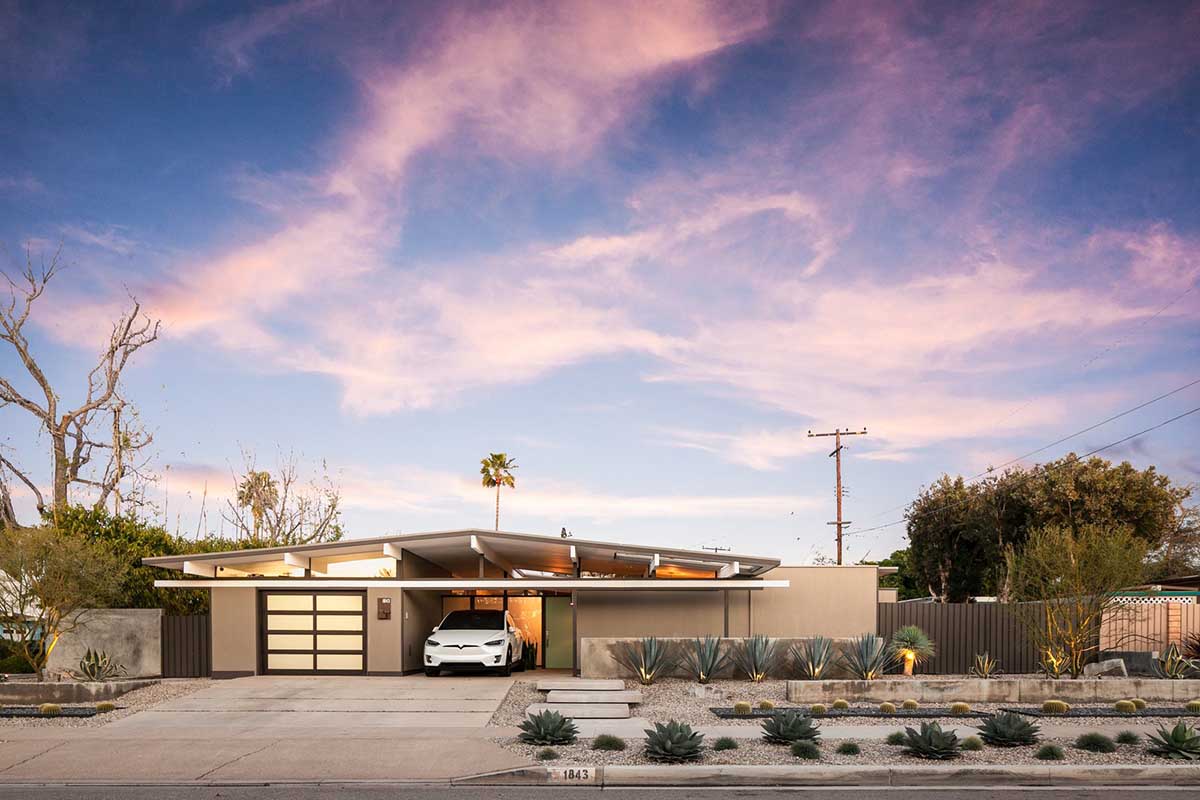
Mid-Century Modern style, born in the mid-20th century, continues to captivate design enthusiasts with its sleek lines, organic forms, and innovative approach. This architectural and design movement revolutionized the way we view modern living.
With its timeless appeal and forward-thinking aesthetic, the Mid-Century Modern style offers a perfect blend of functionality and artistry. Here are more details on the captivating world of Mid-Century Modern design and discover what makes it unique.
Key Features and Characteristics:
- Clean Lines: Mid-Century Modern design embraces clean lines and simplicity. Geometric shapes and sharp angles create a sense of order and balance while showcasing a minimalist aesthetic.
- Organic Forms: Inspired by nature, this style incorporates organic shapes and curves. From the iconic Eames lounge chair to the fluid lines of architectural structures, Mid-Century Modern design seeks harmony with the natural world.
- Integration with Nature: Large windows, open floor plans, and the use of natural materials blur the boundaries between indoor and outdoor spaces. This design approach allows ample natural light, a connection to nature, and a seamless flow between interior and exterior areas.
- Functional Design: Mid-Century Modern style prioritizes functionality without compromising on style. Clever storage solutions, multipurpose furniture, and efficient layouts make these homes aesthetically pleasing and highly practical.
Notable Examples:
- Eichler Homes: Joseph Eichler, a prominent real estate developer, popularized Mid-Century Modern design in California. His homes, characterized by open floor plans, post-and-beam construction, and extensive use of glass, are iconic examples of the style.
- Farnsworth House: Designed by architect Ludwig Mies van der Rohe, the Farnsworth House embodies the essence of Mid-Century Modern architecture. Its transparent glass walls and sleek steel frame create a harmonious dialogue between the structure and its natural surroundings.
- Stahl House: Also known as Case Study House #22, the Stahl House, designed by Pierre Koenig, is an architectural masterpiece. Its cantilevered design, panoramic views of Los Angeles, and seamless indoor-outdoor integration epitomize Mid-Century Modern style.
Mid-Century Modern style inspires homeowners and designers alike, offering a timeless aesthetic that transcends trends. Whether you’re drawn to its clean lines, organic forms, or seamless integration with nature, embracing this style can transform your living space into a modern haven.
Contemporary Style: A Fusion of Innovation and Timeless Sophistication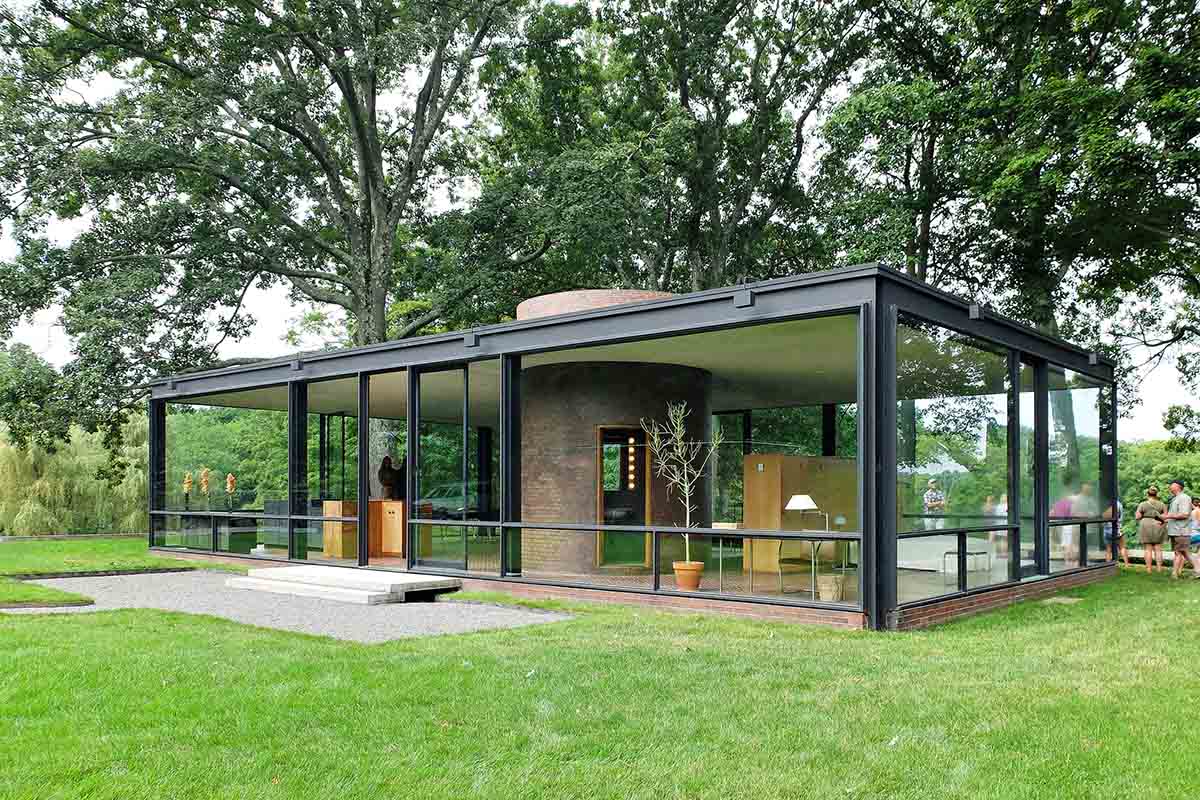
Contemporary style homes are the epitome of modern design, showcasing innovation, sleekness, and a harmonious blend of form and function. With their clean lines, minimalist aesthetics, and emphasis on open spaces, these homes create a welcoming and effortlessly chic ambiance in different house styles.
Key Features and Characteristics:
- Clean Lines and Minimalism: Contemporary-style homes are characterized by their clean lines, simplicity, and minimal ornamentation. These homes embrace a clutter-free aesthetic, allowing the architectural elements and natural light to take center stage.
- Open Floor Plans: Contemporary-style homes often prioritize open spaces and fluid room transitions. This concept promotes connectivity, natural flow, and a sense of expansiveness within the living areas.
- Embracing Natural Light: Large windows, skylights, and glass walls are hallmarks of contemporary homes. These design elements maximize natural light, creating bright and airy spaces that bring the outdoors inside.
- Integration of Indoor and Outdoor Spaces: Contemporary-style homes often blur the boundaries between indoor and outdoor living. Patios, decks, and expansive glass doors create a seamless connection with the surrounding landscape, allowing residents to enjoy the beauty of nature from within the comfort of their homes.
Notable Examples:
- The Glass House, Connecticut: Designed by the renowned architect Philip Johnson, the Glass House is an iconic example of Contemporary style. Its transparent glass walls, steel structure, and minimalistic interiors create a harmonious dialogue between the system and its natural surroundings.
- The Folly Farm, California: This stunning Contemporary home, designed by Jonathan Feldman, showcases the style’s focus on open spaces and natural light. Its expansive glass windows and thoughtfully designed interior spaces provide breathtaking views of the surrounding landscape.
- The Dancing House, Prague: Designed by architects Frank Gehry and Vlado Milunić, the Dancing House is a striking example of Contemporary architecture. The unconventional shape and playful design challenge traditional notions of form and create a unique visual spectacle.
Contemporary-style homes inspire homeowners and designers, offering a perfect blend of innovation, elegance, and functionality. Whether you’re captivated by the clean lines, the seamless integration of indoor and outdoor spaces, or the emphasis on natural light, embracing the Contemporary style allows you to create a home that reflects your modern sensibilities.
Mediterranean Style: Embrace the Romance of Coastal Living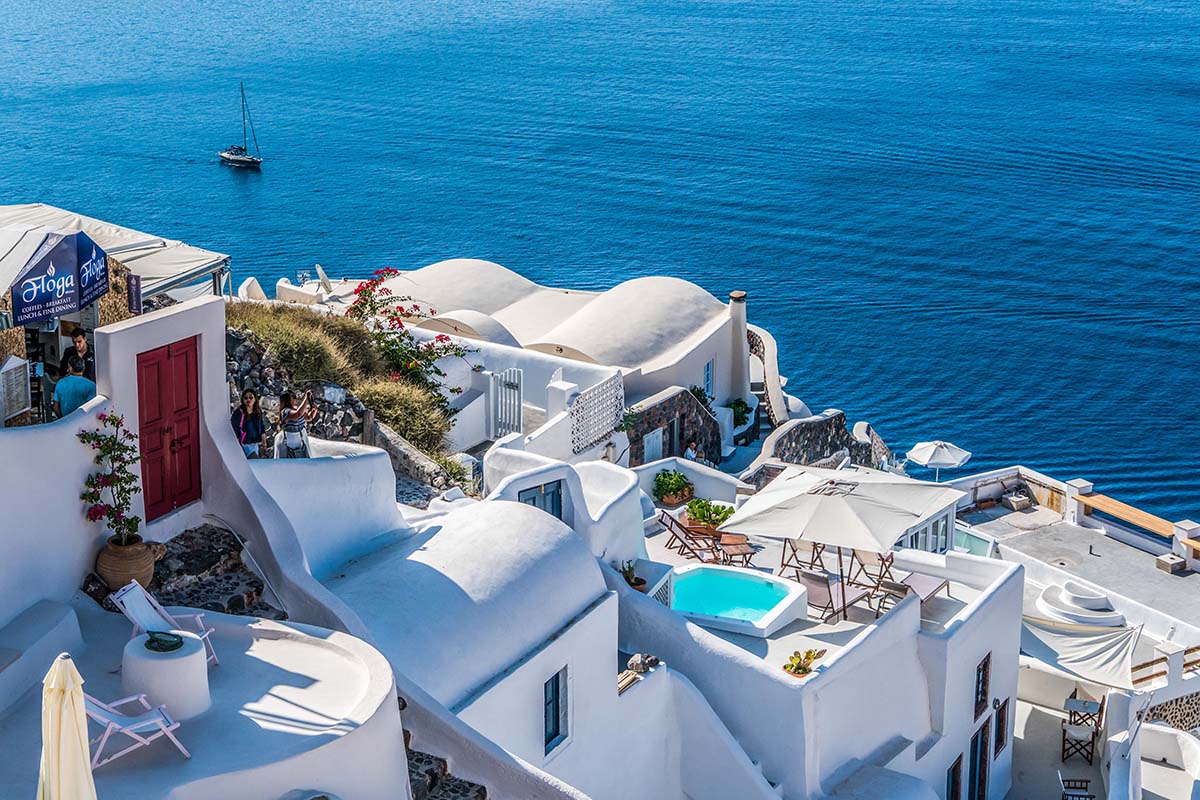
Different types of house styles, like Mediterranean-style homes, transport us to the sun-kissed shores of the Mediterranean region, capturing the essence of a relaxed and vibrant coastal lifestyle.
With their warm colors, captivating arches, and charming terracotta roof tiles, these homes exude a sense of timeless beauty and romance. Let’s embark on a delightful journey into the fascinating world of Mediterranean style and explore the features that make it truly exceptional.
Key Features and Characteristics:
- Stucco Exteriors: Mediterranean-style homes often feature stucco exteriors, which provide a textured and visually pleasing facade. The natural hues of white, beige, or earthy tones create a warm and inviting ambiance.
- Terracotta Roof Tiles: The iconic terracotta roof tiles, reminiscent of the Mediterranean landscape, lend character and charm to these homes. The warm red tones of the tiles complement the stucco exteriors, creating a harmonious color palette.
- Arches and Columns: The Mediterranean style embraces architectural elements like arches and columns. Arched windows, doorways, and graceful columns add a touch of elegance and create a sense of grandeur.
- Captivating Courtyards: Mediterranean homes often feature courtyards that serve as private outdoor sanctuaries. These tranquil spaces are adorned with lush greenery, vibrant flowers, and beautiful water features, providing an oasis for relaxation and entertainment.
Notable Examples:
- Villa Ephrussi de Rothschild, France: Situated on the French Riviera, this magnificent Mediterranean-style villa showcases the allure of the style. Its picturesque location, captivating gardens, and stunning sea views make it a true architectural gem.
- Casa de Pilatos, Spain: Located in Seville, Spain, Casa de Pilatos is an exquisite example of Andalusian-Moorish architecture. Its ornate details, beautiful tilework, and central courtyard embody the essence of the Mediterranean style.
- Coral Gables Biltmore Hotel, Florida: This iconic hotel in Coral Gables, Florida, is renowned for its Mediterranean Revival architecture. Its grandeur, intricate details, and lush surroundings make it a prime example of Mediterranean style in the United States.
One of the top different types of house styles is Mediterranean-style homes, which continue to captivate homeowners with their timeless beauty and relaxed elegance. Whether you’re drawn to the stucco exteriors, the terracotta roof tiles, or the beautiful courtyards, embracing the Mediterranean style allows you to create a sanctuary that evokes the enchantment of coastal living.
Tudor Style: Embrace the Charm of Storybook Elegance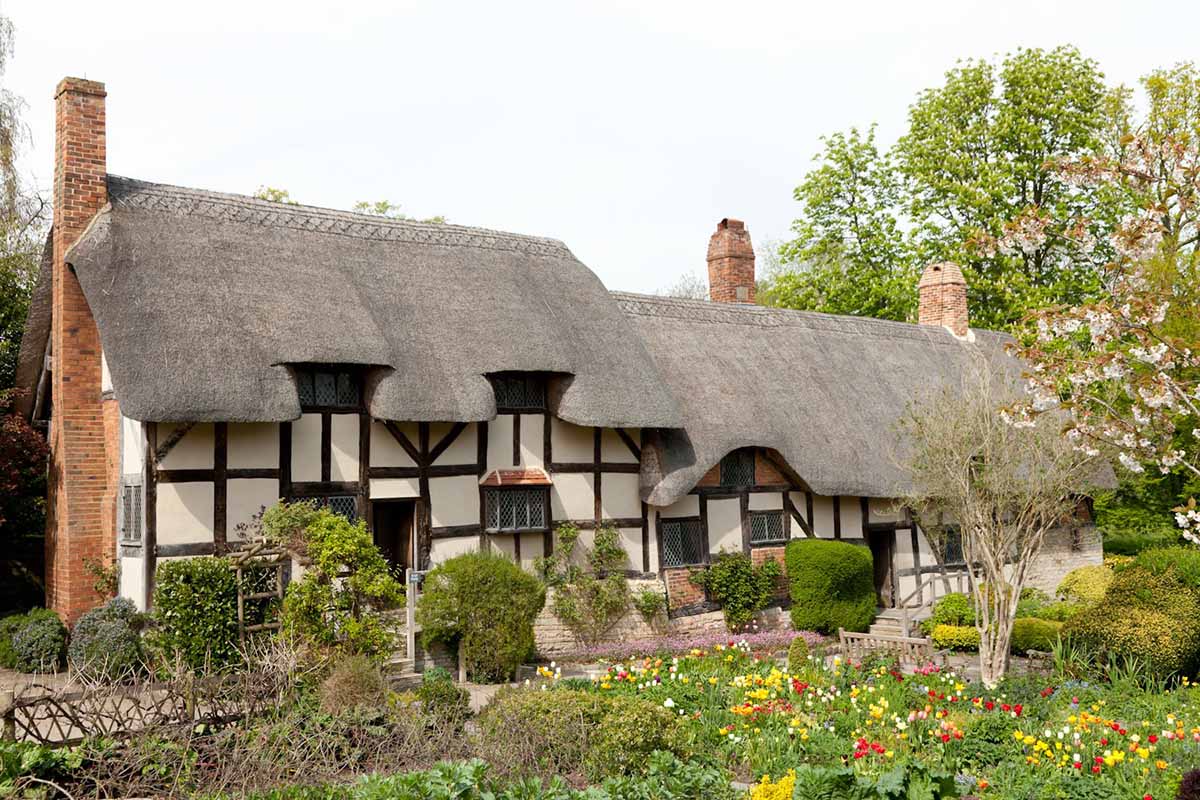
With their beautiful half-timbered exteriors and cozy interiors, Tudor-style homes transport us to a world of timeless elegance and fairytale charm. Inspired by the Tudor dynasty in England, these homes exude a sense of romance and history. Let’s embark on a delightful journey into the captivating world of Tudor style and explore the features that make it truly exceptional.
Key Features and Characteristics:
- Half-Timbered Exteriors: Tudor-style homes are characterized by their distinctive half-timbered exteriors. Wooden beams, often exposed, create a stunning visual contrast against the stucco or brick infill, adding depth and character to the façade.
- Decorative Chimneys: Elaborate and ornate chimneys are a hallmark of Tudor-style homes. These eye-catching features often incorporate intricate brickwork or decorative patterns, becoming focal points that showcase the era’s craftsmanship.
- Leaded Glass Windows: Tudor-style homes feature charming leaded glass windows, often with diamond or rectangular patterns. These unique windows add a touch of elegance while allowing natural light to filter through, creating a warm and inviting interior ambiance.
- Steeply-Pitched Roofs: High-pitched roofs with multiple gables are characteristic of the Tudor style. These dramatic rooflines provide a sense of grandeur and contribute to the overall fairytale-like appearance of the homes.
Notable Examples:
- Anne Hathaway’s Cottage, England: Located in Stratford-upon-Avon, Anne Hathaway’s Cottage is a prime example of Tudor architecture. This charming thatched-roof cottage, with its half-timbered façade and picturesque gardens, offers a glimpse into the Tudor era.
- Harvington Hall, England: Harvington Hall, a magnificent moated manor house in Worcestershire, showcases the intricate craftsmanship of Tudor design. Its beautiful half-timbered exteriors, leaded glass windows, and delightful gardens immerse visitors in the enchantment of the era.
- Oheka Castle, New York: Although not a historic Tudor home, Oheka Castle exemplifies the grandeur and elegance of the Tudor style. Inspired by English country manors, this magnificent estate features Tudor architectural elements such as half-timbered exteriors, leaded glass windows, and a sense of timeless romance.
Tudor-style homes continue to captivate homeowners with their whimsical charm and timeless elegance. Whether you’re drawn to the half-timbered exteriors, the decorative chimneys, or the leaded glass windows, embracing the Tudor style allows you to create a sanctuary that evokes the romance and history of a bygone era and different types of house styles.
Seattle’s Architectural Tapestry
As a local in Seattle, I can proudly say that our city is home to a beautiful array of architectural styles reflecting its residents’ unique character and preferences and a great place to explore different house styles.
- Craftsman-style homes: Warm and attractive aesthetics, impeccable craftsmanship, and a solid connection to nature.
- Mid-Century Modern Homes: Sleek lines, open floor plans, and seamless integration with nature.
- Tudor Revival homes: Charming half-timbered exteriors, decorative chimneys, and a touch of elegance.
- Contemporary homes: Clean lines, minimalist design, and large windows capturing stunning views.
- Northwest Contemporary Homes: Embracing the region’s natural beauty with ample natural light, open floor plans, and natural materials.
- Victorian homes (less prevalent): Ornate details, steep roofs, and decorative trim add historic charm.
- Modern Farmhouse homes (in the suburbs): blend rustic charm and contemporary design, featuring wood siding and inviting front porches.
In Seattle, architectural diversity is vital, and we’re lucky to have a range of house styles that cater to different tastes and lifestyles. Our city offers a delightful tapestry of homes that make Seattle truly unique and welcoming.
Different Types of House Styles: Conclusion
Architectural diversity encompasses an array of house styles, each with distinctive charm and historical significance.
From the ornate details of Victorian architecture to the clean lines of contemporary design, exploring these styles allows us to appreciate the creative expressions that shape our built environment.
Whether you live in a historic home or seek inspiration for a new build, understanding different house styles offers insights into the cultural influences and design principles that have shaped our neighborhoods.
So, embrace the architectural diversity around you, and let the rich tapestry of house styles inspire your appreciation for the beauty of the built environment.
